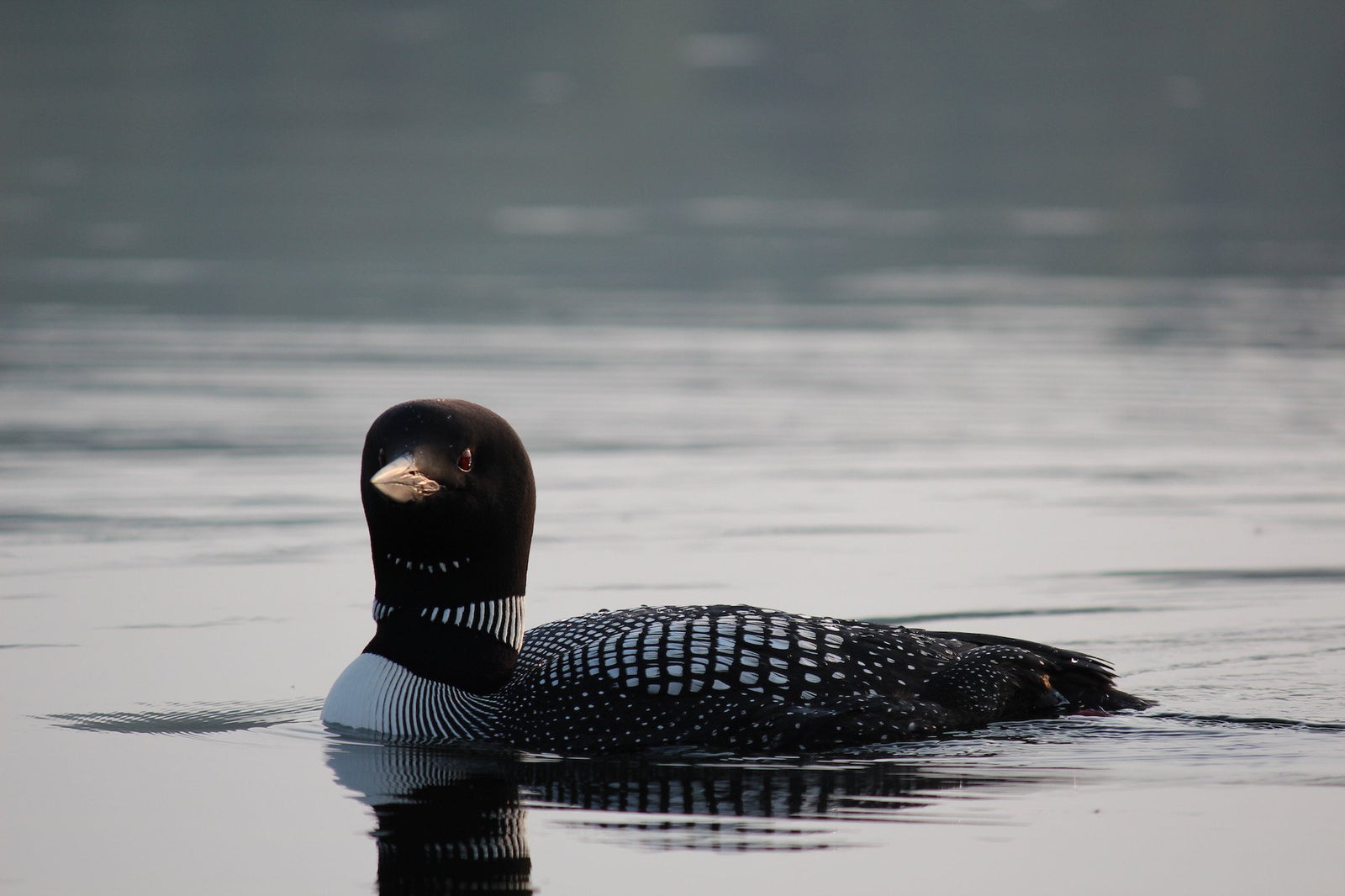Loons in the Adirondacks

Acidification of lakes and mercury contamination of water bodies is a recognized problem in the Adirondacks. Impacts from these environmental issues affect both the flora and fauna found within the Adirondack Park. The common loon is a piscivorous (fish-eating) bird, whose eerie call is often considered a symbol of the Adirondacks.
The impact of acid rain on loon populations varies, from lowering the biological productivity of lakes to reducing the amount of forage fish available to loons (NYS DEC). On severely affected lakes, loon chicks may die from starvation because of low fish numbers. In early studies completed on the impact of acid rain on loons, chick mortality and fledging were widely studied. Loons on the low-pH study lakes were shown to adapt to food resource depletion associated with the acidification.
Acidification remains a potential problem, leading to feeding problems for chicks by reducing prey diversity and quantity (Parker, 1988). Acidic waters also leach mercury and other toxic metals from rocks and soil. These metals concentrate up the aquatic food chain and may reach toxic levels in top predators such as loons. Increased anthropogenic mercury (Hg) deposition, and consequent transformation of inorganic mercury to methylmercury (MeHg) in aquatic environments, has created areas where mercury poses a relatively high risk to wildlife, especially long-lived, piscivorous species.
Eggs abandoned by common loons were collected from states in the Northeast and analyzed for mercury. Mercury was found to be higher in eastern than in western North America. In New England studies, egg volume declined as egg-Hg concentrations increased. Despite this, egg-Hg concentrations were found not to be related to fertility rates (Evers et al. 2003). In order to evaluate the long-term reproductive success and changes in the breeding population of Adirondack loons, monitoring programs have been established. Programs include those conducted by the Adirondack Cooperative Loon Program and the Audubon Society of New York, Inc. and, as stated by the NYS DEC, they "help ensure that the haunting call of the Common Loon continues to echo off the Adirondack hillsides for years to come."
References: Evers, D.C., Taylor, K.M. Major, A., Taylor, R.J., Poppenga, R.H., and Scheuhammer, A.M. 2003. Common Loon Eggs as Indicators of Methylmercury Availability in North America. Ecotoxicology. 12:69-81. Parker, K.E. 1988. Common loon reproduction and chick feeding on acidified lakes in the Adirondack Park, New York. Canadian Journal of Zoology. 66:804-810.













